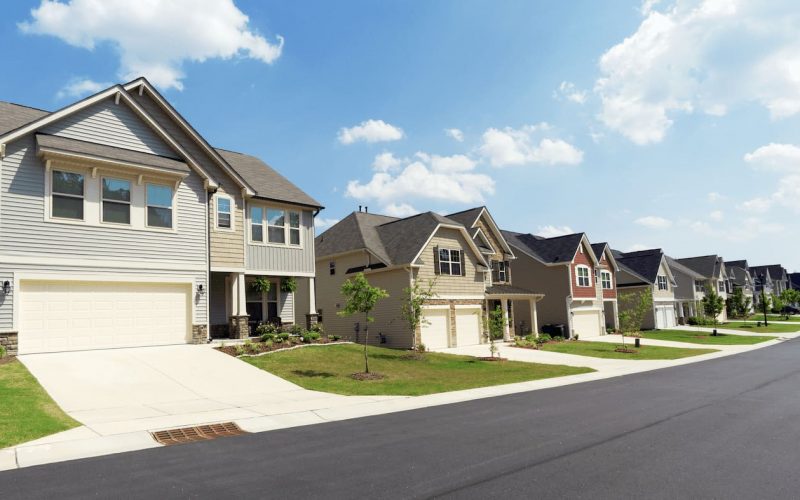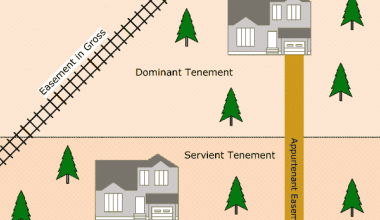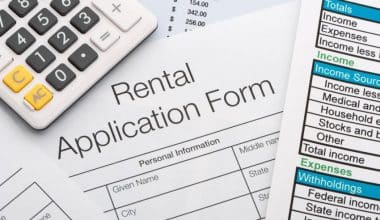Investing in rental properties is a good place to start for new real estate investors. Rental properties can create cash flow as well as value through appreciation. Investors benefit from tax breaks and deductions when they buy real estate.
While investing in rental properties can be a lucrative method of real estate investing, there is a lot to consider before doing so. This comprehensive tutorial will teach you how to begin investing in rental properties as a novice. We’ll go through what it takes to invest in rental properties, common pitfalls to avoid, and items to consider before purchasing your first rental property.
What are Rental Properties?
Rental properties are residential or commercial properties that are leased or rented to a tenant for a specified length of time. There are short-term rentals, such as holiday rentals, and long-term rentals, such as those with one- to three-year leases.
Residential rental properties range from one to four-family residences and include:
- single-family residences,
- duplexes,
- triplexes, as well as
- quadplexes.
Commercial rental properties come in a variety of forms, including:
- multiple-family (apartment complexes),
- commercial (such as a warehouse or self-storage),
- a workplace,
- & retail space
- multi-use.
Because they are less expensive, residential rental properties are frequently more accessible to novices. Less money is required up front, which typically means that financing is easier to obtain. While exceptions exist, residential rental properties are often easier to maintain. Managing one tenant is usually easier than managing twenty.
As a result, the focus of this thorough guide on investing in rental properties is on residential rentals.
Most investors purchase a rental property to generate positive cash flow or make more money each month than they spend on expenses. Although not all rental properties have a positive cash flow at first, achieving one is a typical goal of rental investing.
Investing in Rental Properties
Owning rental properties is an active kind of real estate investing that necessitates time, attention, and involvement. It’s not for everyone to be a landlord. As you can see, there is a lot of work involved in locating, assessing, purchasing, and managing a high-quality rental property.
While it is possible to outsource some of these active jobs, it is rarely completely passive, and there are always hazards.
Do you believe that investing in rental properties is a good choice for you? Continue reading to learn where to begin and how to effectively prepare for the assignment at hand.
Let’s go over the seven steps you’ll need for investing in rental properties:
#1. Decide where you wish to invest your money.
Beginning real estate investors frequently try investing in rental properties in their neighborhoods. This could imply living in the same ZIP code, city, or state as their current address. However, depending on the market in which you live, this may not be a possibility, nor is it always the best one.
Rent may not support a positive cash flow from rental property if you live in a neighborhood where property values are at the high end of the market.
Read Also: Commercial Real Estate: Definition, Types, Companies & Best Investment Tips
Perhaps you reside in a high-priced market, such as San Francisco, where the typical single-family property was $1.6 million in March 2021. You might not have enough money to buy a neighboring rental property. If this is the case, search for your initial investment in other markets.
While it may be easier to maintain a rental that is only 10 minutes away rather than two states away, you may invest in any market. If you’re not going to invest in your own backyard, take a broad look at other markets, looking for regions that fit the following criteria:
- The demand for rental properties is high, but housing availability and vacancy rates are low.
- Job growth is either constant or increasing. Economic growth, job creation, and population growth are all positive indications.
- The average rental revenue covers the cost of the rental property and corresponds to the funds you have available to invest. A $200,000 rental property will not provide much of a return if it can only be rented for $700 per month. And if you only have $20,000 to put down, you’re unlikely to get approved for bank financing on a $200,000 rental property.
Read also: Property Valuation: How to Value Your Real Estate Investment & Properties.
There are a variety of free and paid tools available to assist you in conducting market research on various locations of the country, including our own guide to the best places to buy a rental property in 2023. Use them to learn about economic growth, housing demand, vacancy rates, average income, and average home costs in various places.
- Mashvisor is a partially free website that helps you evaluate vacation rental pricing, current supply, and the viability of a potential investment. Some features are only available with a purchased upgrade.
- Local Market Monitor is a paid website that offers market demographics, investment evaluations, and capitalization rates.
- Department of Numbers is a free website that provides population, employment, housing, and economic information.
- Vacancy rates can be found at Census.gov.
- The top U.S. real estate markets are depicted in PwC’s Emerging Trends in Real Estate 2021.
After deciding on a market to invest in, examine it on a micro-level. Identify certain neighborhoods or ZIP codes to target while keeping the following factors in mind for each area:
- Housing supply and demand, including any future construction that will raise demand.The crime rate.
- School evaluations.
- Property value on average.
- Rent is about average.
- Any particular markets to avoid or pursue, such as student or cheap housing?
#2. Figure out what you want to invest in.
While single-family rental properties are one investment choice, they are not the only ones. You may own a duplex, triplex, quadplex, or anything much larger (if you want to rent out your property commercially). Determine whether you want to own vacation rentals or long-term rental properties.
Whatever property type you choose, it’s critical to understand what features of that property type are in demand. This comprises the unit’s or home’s size, the number of bedrooms and bathrooms, and any amenities such as a pool or fireplace.
Determine whether a certain property type is oversaturated or undersupplied. For example, you may discover that a region has much too many one-bedroom apartments and far too few two-bedroom apartments available for rent. You can do this by looking at current market inventories on real estate rental industry websites like Zillow, HotPads, or ForRent.com. Speaking with a local real estate agent is another excellent approach to learning about a given market.
Make sure you understand what you’re looking for in a rental property, such as:
- surface area,
- the amount of bedrooms or bathrooms, etc.
- construction style (e.g., wood or concrete),
- the type of parking that is available, and
- Type of property (e.g., single-family residence, condo, townhome, duplex, triplex, or fourplex).
It’s not uncommon for different communities to have distinct sets of requirements.
#3. Locate potential rental properties in which to invest.
You may start looking for properties to invest in once you’ve narrowed down your market and defined your criteria. There are various methods for locating investment properties.
Search the MLS or consult with a Realtor.
Searching the multiple listing service (MLS) is the most typical technique to find suitable investment properties. Websites such as Realtor.com and Zillow allow you to set up search parameters and receive notifications when a new property matches those criteria.
You can also contact a local real estate investment agent and ask them to set up the same alerts for you. A good realtor can be a great source of connections to banks, lending institutions, contractors, and suppliers that will be useful when purchasing a rental property.
They may also be able to send you “pocket listings,” which are listings that have not yet been published on the MLS.
Purchase Turnkey Rental Properties
Certain businesses specialize in the sale of complete rental properties. After purchase, these rentals require little to no maintenance; this is primarily a cash-flowing investment. (Of course, no rental is fully passive; you may need to intervene if things go wrong.)
In most cases, the properties have been renovated, they have an existing tenant, and the landlord responsibilities are handled by a third-party management company.
However, just because an investment is a turnkey doesn’t imply it’s a good one. Investigate the market to see if the property’s purchase price, rental rate, and location support the investment.
Collaborate with a wholesaler.
Off-market investment options at below-market prices are discovered by a real estate wholesaler. They bargain with the seller for a low purchase price and then assign the contract to a third-party bidder for a higher price. The wholesaler profits from the differential between the buy and sale prices.
To close, wholesale properties often require a 100 percent cash payment. They frequently require renovations or improvements, thus they may be ineligible for financing. There are alternative lenders, such as hard money and private lenders, who can assist with cash for closing and finances for property repairs. These lenders, on the other hand, can charge hefty interest rates and only provide money for a limited time.
While wholesalers might provide exceptional off-market investment opportunities, finance issues can make working with them problematic.
Marketing by Direct Contact
A marketing campaign is another technique to identify a possible rental property to invest in. You might utilize targeted web marketing or bandit signs. Another common option is direct mail marketing.
An investor uses a direct mail campaign to send a series of letters or postcards to off-market sellers. List Source and Data Tree, for example, allow you to create and purchase lists of people who fulfill specific criteria. Look for owners who are in foreclosure or pre-foreclosure, properties that have recently gone through probate, or properties that are owned free and clear (without a mortgage).
You may filter the results by property parameters like the number of bedrooms and baths, as well as by county, ZIP code, or city.
By typing or handwriting a series of letters or postcards, you can create your own postal campaign. You can also engage a third party to do it for you.
This strategy of locating possible investments requires the most time and money. It can be a terrific way to find off-market rental properties, but it may not be the best option for you. This is a good source of off-market inventory if you’re prepared to put in the time, effort, and money required to conduct a successful mail campaign.
#4. Examine the Rental properties and run the figures
It is critical to calculating the net cash flow for a rental property. This is the rental income after expenses and mortgage payments have been deducted. This is especially critical if you want to have a positive cash flow, which it almost certainly is.
To begin, figure out how much rental income you’ll be able to generate. Rentometer is a free tool that allows you to compare average and median rental prices based on the location, size, and type of your property. If the property currently has a renter, ensure that the tenant is paying market rental rates; there may be room to raise the rent.
Always certain that the comparable rentals are in comparable condition to your property. If your rental is out of date or lacks facilities in comparison to other properties in the community, you may not be able to charge market rent until you do some upgrades or renovations.
Determine the typical vacancy rate for your specific area based on the property type you’re buying after estimating the market rent for the property. To obtain this information, use the census or a real estate data tool.
Next, include any costs linked with the property, which may include:
- Taxes,
- Insurance for real property (flood insurance may also be required),
- Sewage and water,
- Garbage,
- Electric,
- Gas,
- Fees for homeowners associations (HOAs),
- advertising,
- Maintenance (the industry standard is 1%–3% of the property value),
- Lawn care
- Property administration (if you use a third-party manager).
Read Also: 5 Must-Have Online Real Estate Tools for Agents
When calculating a return on investment, most rental properties use a cash-on-cash return. The cap rate, on the other hand, is advantageous when investing in properties with more than one rental unit.
Keep in mind that there is always the possibility that the property will not generate the profit or return that was previously expected. You may also encounter unexpected issues along the course of the venture. There is no such thing as a “perfect” return on investment, an ideal cap rate, or optimal monthly cash flow. It all boils down to your own investment objectives, desired rate of return, and risk tolerance.
Analyze each rental property and proceed with the investment(s) that match your needs.
#5. Obtain financing (if needed)
If you can’t pay for the entire property in cash, you’ll need to get financing. Once you’ve picked an investment, begin the documentation and underwriting procedure as soon as feasible. Not every bank lends to individuals for investment properties; choose a lender or bank with whom you can work before putting the property under contract.
Most banks require a 20% down payment, but putting down more often equals a better interest rate. Interest rates for investment property loans are normally higher and can vary based on the type of property you’re purchasing.
#6. Find a tenant
After you’ve closed on the property, you’ll need to find a tenant. Screening tenants might be the difference between a decent renter who maintains the property and pays on time and one who is late every month, stops paying entirely, or trashes the property on their way out.
For a little price, online programs like My Rental, Turbo Tenant, and My Smart Move can screen tenants while keeping you in compliance with fair housing laws. Third-party management businesses will also undertake the tenant screening procedure as part of their services.
If you handle it yourself, ensure that your screening method is similar for each tenant. Understand the Fair Housing Standards and the screening questions you wish to ask. While it is up to you to assess your needs, there are a few industry standards in the residential rental property sector that you should be aware of:
- Income that is equal to or greater than the rental amount (three times the rental amount is the gold standard).
- Work history that has been consistent, with a present, stable job.
- Verifiable earnings (i.e., pay stubs, bank statements, or tax returns).
- Credit that meets or surpasses your bare minimum (620 is a common minimum).
- A criminal history check that satisfies your criteria for prior convictions or misdemeanors.
- Previous landlords who can attest to previous rental history and performance.
If a misdemeanor, criminal history, eviction, or other undesirable result is discovered during the screening process, ask questions to learn more. You are not required to rent to a potential tenant if they do not match your housing standards (which must be within Fair Housing guidelines).
Keep in mind that even the best screening process can result in a renter who does not honor the agreement.
Lease Points to Consider
A lease is a legally binding agreement between a tenant and a landlord that describes each party’s responsibilities. This frequently includes:
- whether the tenant is permitted to have pets,
- Rules for modifying the property,
- painting limits,
- vehicle parking directions,
- the procedure for making a repair request,
- Due dates for rent and late fees,
- how to make a payment, and
- any other laws and regulations that the tenant should be aware of
A lease agreement can be two pages or twenty pages long. While there are numerous free leases available online, it is advisable to have a real estate professional analyze or prepare the agreement for you.
#7. Take care of the property
Property management entails the following tasks:
- Vetting new renters
- Taking care of leases and move-ins;
- Coordinating maintenance requests from tenants;
- Interacting with tenants
- Obtaining rent;
- Delivering reminders, such as late payment and eviction notices;
- Inspections of move-outs; and
- After-move-out payment of any deposit fees
When it comes to property management, you have two options: hire a third party or handle it yourself.
Employ the services of a third-party management organization.
Hiring a property management company is likely to be the best option if the purpose of the rental property is to generate passive income. In exchange for monthly fees, they manage everything related to the rental.
Each management business has a separate charge and service structure, which could be a fixed amount or a percentage of gross rents. Typically, you will pay 8%–12% of your rent.
Before employing a management firm, have an interview with them. Request referrals from previous clients, visit other properties they manage, and check internet reviews to confirm they deliver on their promises.
Managing the Rental Properties Yourself
If you opt to manage the property yourself, consider using a free online rental service like Cozy or Avail, which will allow you to:
- Rent and collect deposits online,
- Control the lease (including sending it for electronic signatures),
- Send text or email reminders when rent is due if payments are late,
- Automatically determine whether a late fee is owed, and
- All payments should be deposited directly into your bank account.
Read Also: Property Valuation: How to Value Your Real Estate Investment & Properties.
Handling repairs and upkeep is one of the last active jobs in managing a rental property. It’s best to be proactive with maintenance as a landlord so you don’t have to deal with emergency repairs. Check that the property is in good working order before the tenant comes in. Examine out:
- plumbing,
- electrical,
- the ceiling,
- HVAC systems, etc.
- the hot water heater
- fans,
- as well as lights
- appliances.
It may be useful to supply your tenant with reminders or even supplies for routine maintenance such as air filter replacement.
Many landlords compile a list of area service providers, such as handymen, plumbers, electricians, and contractors. If an unforeseen repair is required, the landlord knows exactly who to contact to have the problem resolved as soon as possible.
Perform a walkthrough of the property before the renter moves in. Take time-stamped images of each room and record the property’s condition in an inspection report. This agreement should be signed by both the tenant and the landlord upon move-in and move-out.
This agreement demonstrates to the tenant your expectations for the rental’s state upon move out and allows you to refer to the initial condition if there are any discrepancies. Use the same criteria after move-out to appraise conditions and determine how much of the tenant’s deposit is refunded.
Top 10 Features of Profitable Rental Properties
#1. Place of residence
The type of tenants you attract and your vacancy rate will be determined by the neighborhood in which you buy. If you purchase near a university, students are likely to dominate your pool of potential tenants, and you may struggle to fill vacancies every summer. Be warned that some municipalities attempt to discourage rental conversions by imposing expensive permit fees and red tape.
#2. Real property Taxes
Property taxes are going to vary greatly across your chosen area, and you’ll want to know how much you’ll be losing. High property taxes are not always a bad thing—for example, in a beautiful area that draws long-term tenants—but there are also undesirable locales with high rates.
The municipality’s assessment office will have all of the tax information on file, or you can speak with local homeowners. Check to see if there will be any property tax hikes in the near future. In a financial crisis, a municipality may raise taxes considerably above what a landlord can practically demand in rent.
#3. Educational establishments
If you’re dealing with a family-sized home, think about the quality of the area schools. Although your first concern will be monthly cash flow, the overall worth of your rental property will come into play when you sell it. If there are no good schools nearby, the value of your investment may suffer.
#4. Theft
Nobody wants to live adjacent to a hotbed of illegal activity. Neighborhood crime statistics should be available from the local police or public library. Check the rates of vandalism, serious and petty crimes, and make a note of whether criminal activity is increasing or decreasing. You should also inquire about the frequency of police presence in your neighborhood.
#5. The Labor Market
More tenants are drawn to locations with expanding employment prospects. Check with the U.S. Bureau of Labor Statistics (BLS) or a local library to find out how a certain area ranks in terms of job availability. If there is an announcement about a major corporation relocating to the neighborhood, you can bet that workers looking for a place to reside will flock there. Depending on the type of business engaged, this could influence house values to rise or fall. You can presume that if you want that firm in your backyard, your tenants will too.
#6. Facilities
Take a walkabout in the neighborhood and look at the parks, restaurants, gyms, movie theaters, public transportation connections, and other amenities that attract renters. City Hall may offer promotional brochures that can point you in the direction of the finest combination of public amenities and private property.
#7. Future Development
The local planning department will have information on existing developments or plans for the region. If there is a lot of building going on, it is most likely an excellent growth area. Keep an eye out for new developments that may have an impact on the value of nearby properties. Additional new homes could compete with your property as well.
#8. The number of available listings and vacancies
If an area has an exceptionally high number of listings, it could be the result of a seasonal cycle or a community in decline—you must determine which it is. High vacancy rates, in any situation, force landlords to decrease rents in order to recruit renters. Landlords can boost rents since vacancy rates are low.
#9. Rents on average
Rental revenue will be your bread and butter; therefore, you should be aware of the average rent in the area. Make certain that any property you are considering can generate enough rent to cover your mortgage payment, taxes, and other outgoings. Investigate the area well enough to predict where it will be in the following five years. If you can afford the region now, but taxes are likely to rise in the future, and affordable property today may imply bankruptcy later,
#10. Natural Disasters
Insurance is another expense you’ll have to deduct from your returns, so you’ll need to know how much it’ll cost. If you live in an earthquake- or flood-prone area, insurance costs might eat into your rental revenue.
Common Rookie Rental Properties Blunders
#1. Miscalculation of demand in the region
Don’t buy a property in a market that doesn’t support your investment simply because you believe it would be a good spot to invest. This is true for all sorts of rental properties, but it is especially true for vacation rentals.
The success or failure of your rental property is determined by supply and demand. Investigate supply and demand in your area. Find the average vacancy rate for your property category in real-time. These will tell you if it’s a good spot to invest your money. Vacancy rates can be found in census data, and local agents and property managers can provide you with up-to-date information on vacancies.
#2. Overestimation of Expenses and Underestimation of Rentals
Beginner investors frequently overestimate the net rent because they are thrilled about the potential of owning a rental property. It’s wise to err on the side of caution and run your numbers with a rental rate that’s a little lower than average.
If your calculations with this number appear good, a market rent will be even better. This allows you to be more flexible with your rental price if the market shifts or if there is more supply than demand for your rental type in that area.
Confirm your projected expenses before purchasing a rental. Investigate the annual tax rate, obtain a price for rental property insurance, and examine previous power bills. If this is your first rental investment, consider including a 5–10% expense cushion as well.
#3. Failure to maintain and underestimation of repair expenses
Even if you save money for unexpected repairs and annual maintenance, you may not have enough to replace a large item.
As a precaution, keep a few thousand dollars in a savings account. This ensures that you have extra funds in the event of a pricey emergency repair.
#4. Not beginning eviction proceedings swiftly enough
Eviction isn’t a pleasant experience. However, there is always the possibility that the tenant will stop paying, requiring you to evict them.
Know your state’s eviction regulations, and don’t put off starting the eviction procedure for too long. Beginner landlords frequently give the tenant several chances, and before they realize it, several months have passed with no rent. They still have to evict people. Follow through on your lease agreement if it states that you will give a 30-day notice after a certain number of days of nonpayment.
What are some common legal issues involved in rental properties?
Common legal issues involved in rental properties include eviction, security deposit disputes, rent control, and habitability. Landlords should be familiar with their state and local laws and regulations to avoid potential legal disputes with tenants.
What are the laws and regulations surrounding rental properties in different states?
The laws and regulations surrounding rental properties vary from state to state. For example, some states have rent control laws that limit the amount a landlord can increase rent, while others do not. Additionally, some states have specific laws about security deposits, while others do not. It’s important for landlords to be familiar with the specific laws and regulations in their state to avoid any legal issues.
What happens if a tenant causes damage to a rental property?
If a tenant causes damage to a rental property, the landlord may charge the tenant for the cost of repairing the damage. This can be done through deductions from the security deposit or through direct payment from the tenant. If the damage is extensive, the landlord may choose to take legal action against the tenant to recover their losses.
What is the role of a property manager in rental properties?
A property manager is responsible for managing the day-to-day operations of a rental property, including finding and screening tenants, collecting rent, handling maintenance and repairs, and addressing any tenant complaints or issues. Property managers can be hired by landlords to help manage their rental properties and can provide valuable support and expertise in the field.
How can a landlord protect their rental properties from natural disasters?
Landlords can protect their rental properties from natural disasters by taking certain precautions, such as installing smoke detectors, securing loose objects, and creating an emergency evacuation plan. Additionally, landlords can purchase insurance to protect their rental properties from damage caused by natural disasters.
Conclusion
Every state has good cities, good neighborhoods, and good properties. To line up all three, a lot of footwork and study is required. When you identify your perfect rental property, keep your expectations realistic and make sure your own finances are in good enough shape to wait for the property to begin generating cash.
When approached in a businesslike manner, rental properties can be an outstanding investment. But, before you put your money down, you’ll want to understand (as much as possible) what you’re getting into. While the prospect of earning a passive monthly income from real estate is appealing, it’s crucial to understand that it often takes a lot of labor to keep that revenue flowing.
Investing in rental properties can be quite profitable. However, you must conduct thorough research on properties, markets, and tenants.
- RENTAL AGREEMENT: Forms, Templates & Best US Practice (Detailed Guide)
- PROPERTY MANAGEMENT: Roles of Property Managers & Firms (+Top Software Picks)
- HARD MONEY LENDERS: Best Hard Money Lenders For The First Time Investors (Updated)
- Property Valuation: How to Value Your Real Estate Investment & Properties.
- Commercial Real Estate: Definition, Types, Companies & Best Investment Tips
- OFF MARKET PROPERTIES: How to Find Off-Market Properties for Sale






